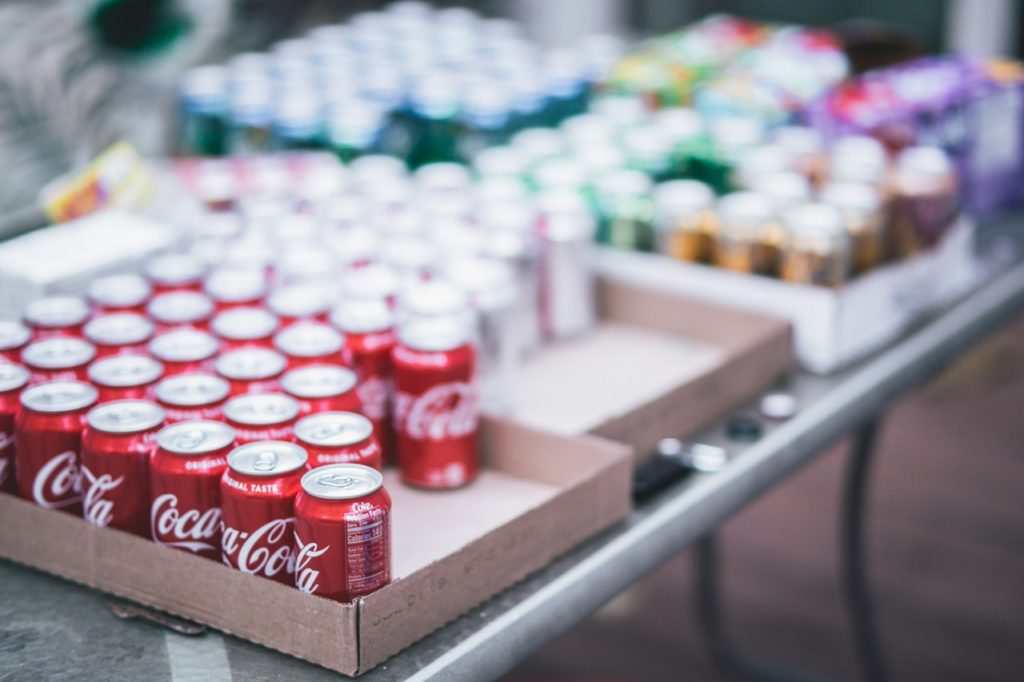
I learned this today. The first drink put in a can was beer in the 1930s, but it took a while before drink canning could be perfected.
The process of canning was invented by Nicolas Appert in France in 1809. He was responding to a challenge by Napoleon Bonaparte for anyone that could come up with a way of making food last long enough for soldiers to carry it in a war. He invented a process of preserving food through sterilization and won a 12,000 franc prize from Napoleon. He never managed to bring his invention to market, though. It took further inventions in England and America before a canning process began, and even then, the “cans” were made of pottery, glass, and tinplated iron.
By 1825, tinplated cans are the main type of can, and inventions in the 1840s make it much faster to manufacture the tin can, increasing production tenfold. Canning advances continue and in 1858 the first can opener is invented. I love things like this. People lived for fifty years without something that seems so obvious to us. I always wonder what things people will have in fifty years that seem so obvious but we have never thought of.
By the early 20th century, food canning is basically perfected and in 1933 motor oil is canned for the first time. This seems to show people that a liquid can be canned because two years later, in 1935, beer is canned for the first time.
Krueger Cream Ale was the very first beer to be sold in cans. They had teamed up with the American Can Company, but it was a big risk for them so the American Can Company offered all of the machinery free of charge on the condition that Krueger paid up if the experiment worked. It did work.
There were several advantages to canned drinks, but also several problems that needed to be overcome.
Some of the advantages were the ease with which cans can be stacked and shipped. You can fit more product by volume in a truck or train if it is in cans than if it is in bottles. It is easier and more convenient for the customer. Canning is cheaper than bottling and cans are less likely to break in transit. They were also cheaper for the customers because a deposit had to be paid on glass bottles, but this wasn’t required for tin cans.
Some of the disadvantages were beer and soft drinks are carbonated which puts more internal pressure on the cans than food does. The cans had to be strengthened without being thickened. If they expanded under the pressure, they could leak. Another problem was the shelf life of the drinks. The tin or iron that the cans were made of could dissolve into the drink and drastically affect its taste. This is one reason why beer was canned before soft drinks. Beer is less acidic than soft drinks and didn’t dissolve the can as quickly. Soft drinks contain phosphoric and citric acid which is highly corrosive.
The problem of corrosion and the drink tasting metallic was solved by inserting a layer between the drink and the can. This was usually either a plastic or a wax layer and it meant the drink wouldn’t taste metallic and could be stored for longer in the cans.
The first soft drink sold in a can was Cliquot Club ginger ale in 1938. Cans were popular, but they didn’t immediately outsell glass bottles. Pepsi and Coca Cola both started selling their drinks in cans.
The first drink cans didn’t have the ring pulls that we are used to now. Cans were sealed in the same way as food cans and a can opener was necessary to open them. A single puncture “church key” was sold to puncture a hole in the can that could be used to pour the drink out. The expression “church key” was first used for bottle openers in the 1850s, because they looked like a church key, and the name was continued with the drink can openers.
Production of drink cans was limited during World War 2 and the Korean War because the metal was needed for the war effort and most of the troops took canned food.
After the Korean War is when we start to see the drink cans that we know now. In 1957, aluminium cans were invented. Aluminium is lighter, stronger, and less likely to be corroded than tin. It is also highly recyclable.
In 1959, American Ermal Fraze invented the ring pull and canned drinks started to outsell bottled drinks. This was convenient for the customer, but it created a huge amount of litter as people would just drop them on the floor. Some people even choked on them after dropping them into the can. In 1989, the ring pull that we have today was invented. It stays on the can and doesn’t cause litter.
There is no exact number, but close to 500 million aluminium drink cans are produced every day, worldwide. The drink can is a staggering invention, but we need to follow it with staggering advances in recycling.
So, the first drink in a can was beer in 1935. It was beer because it is less acidic than a soft drink and doesn’t corrode the inside of the can as much. And this is what I learned today.
Photo by Craig Adderley from Pexels
Sources:
https://www.aircontrolindustries.com/us/packaging-and-labelling-us/evolution-of-the-beverage-can/
https://industrialphysics.com/knowledgebase/history-of-the-can/
https://en.wikipedia.org/wiki/Drink_can
https://www.cancentral.com/can-stats/history-of-the-can/time-innovation
https://en.wikipedia.org/wiki/Gottfried_Krueger_Brewing_Company
https://en.wikipedia.org/wiki/Church_key
https://www.theworldcounts.com/challenges/consumption/foods-and-beverages/aluminium-cans-facts/story

